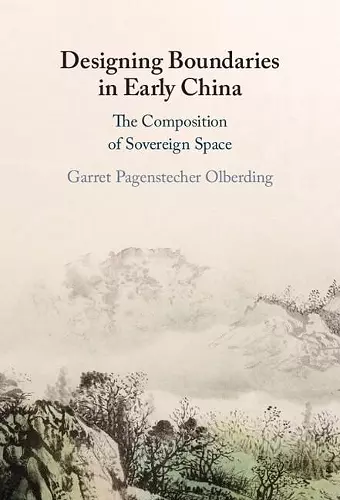Designing Boundaries in Early China
The Composition of Sovereign Space
Garret Pagenstecher Olberding author
Format:Hardback
Publisher:Cambridge University Press
Published:18th Nov '21
Currently unavailable, and unfortunately no date known when it will be back
This hardback is available in another edition too:
- Paperback£18.99(9781009074667)

Explores how sovereign space in early China was imagined and negotiated in the ancient world.
Designing Boundaries in Early China explores how ritual structures signified the organization of sovereign space in early China. By drawing on a range of source materials, Garret Pagenstecher Olberding makes a compelling case for how sovereign boundaries were formed and negotiated in the ancient world.Ancient Chinese walls, such as the Great Wall of China, were not sovereign border lines. Instead, sovereign space was zonally exerted with monarchical powers expressed gradually over an area, based on possibilities for administrative action. The dynamically shifting, ritualized articulation of early Chinese sovereignty affects the interpretation of the spatial application of state force, including its cartographic representations. In Designing Boundaries in Early China, Garret Pagenstecher Olberding draws on a wide array of source materials concerning the territorialization of space to make a compelling case for how sovereign spaces were defined and regulated in this part of the ancient world. By considering the ways sovereignty extended itself across vast expanses in early China, Olberding informs our understanding of the ancient world and the nature of modern nation-states.
'Garret Pagenstecher Olberding's Designing Boundaries in Early China is a breath of fresh air, in the occasionally sclerotic field of Chinese geography. Far from confusing the model with realities on the ground, he shows us, again and again, how maps induced and guided the conceptual pathways in the antique world he knows so well. The book raises a number of intriguing questions, such as, did the spatial senses of 'neighbor,' 'boundary,' and 'enemy' experience a tectonic shift during or after the late Warring States period? What, if anything, is distinctively 'Chinese' in the early writings in classical Chinese? How did the imperial court view itself, and imagine it was viewed by others? To what degree did people think the not-yet civilized could be civilized and by what means? These are probing questions, not easily answered, so let the debates begin!' Michael Nylan, University of California, Berkeley
'A fascinating exploration of the conceptualization and representation of space in early China, particularly in terms of the ritual ordering of sovereign space. This is a powerful work in which Olberding pulls together a wide range of materials and develops exciting and important arguments.' Michael Puett, Harvard University
ISBN: 9781316513699
Dimensions: 235mm x 158mm x 17mm
Weight: 460g
300 pages